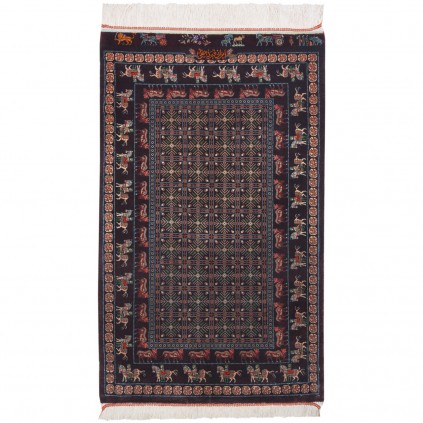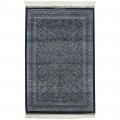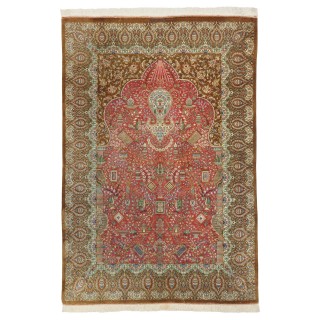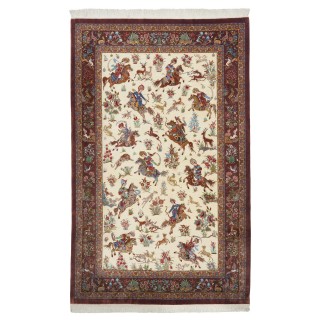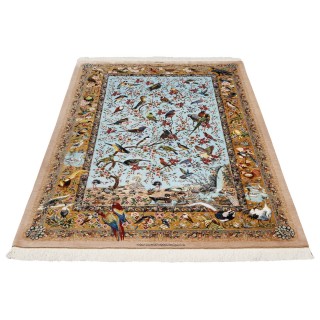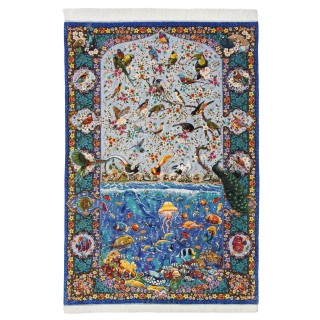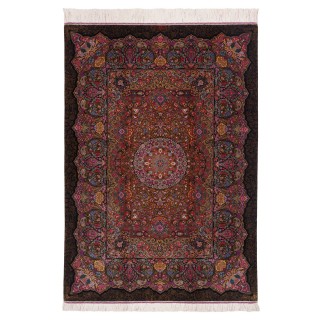This handwoven Qom rug measures 60 × 100 cm (2'0" × 3'3") and has an area of 0.6 m² (6.46 ft²). Produced under the “Zabihi” brand in an all-silk construction with a very fine weaving density of approximately 13,000 knots/dm², it presents a kheshti (compartment) design inspired by the Pazyryk pattern—an intelligent fusion of history, geometry, and color. The Pazyryk carpet is regarded as the oldest surviving pile rug in the world, discovered in the years 1949–1947 by the Russian archaeologist Sergey Rudenko in the Pazyryk Valley of the Altai Mountains within the territory of Russia. According to many archaeologists, that carpet was crafted by Iranian artisans and offered as a gift to a Scythian king. Within this piece, the ordered, repeating kheshti structure imparts a measured, architectural mood. A ground-and-border palette combining black and claret lends the rug a bold, regal dignity. Geometric forms, mounted horses, decorative bands, and recurring motifs are set in purposeful contrast and harmony with the designed geometric lines, clearly reflecting a contemporary approach to reimagining historical patterns. Thanks to its all-silk make, the rug carries a distinctive sheen and softness—well suited to spaces where art, history, and beauty intersect.
Data sheet
- Type
- Handwoven Rugs
- Rug Dimensions (cm)
- 60 × 100 (1'12" × 3'3" )
- Area (m²)
- 0.6
- Shape
- Rectangle
- Weight (kg)
- 1.3
- Origin
- Qom
- Approx. Knot Density (per sq. dm)
- 13100
- Material
- All Silk
- Layout
- Square/Block
- Design
- Geometric
- Designer
- Zabihi
- Border Color
- Black & Maroon

